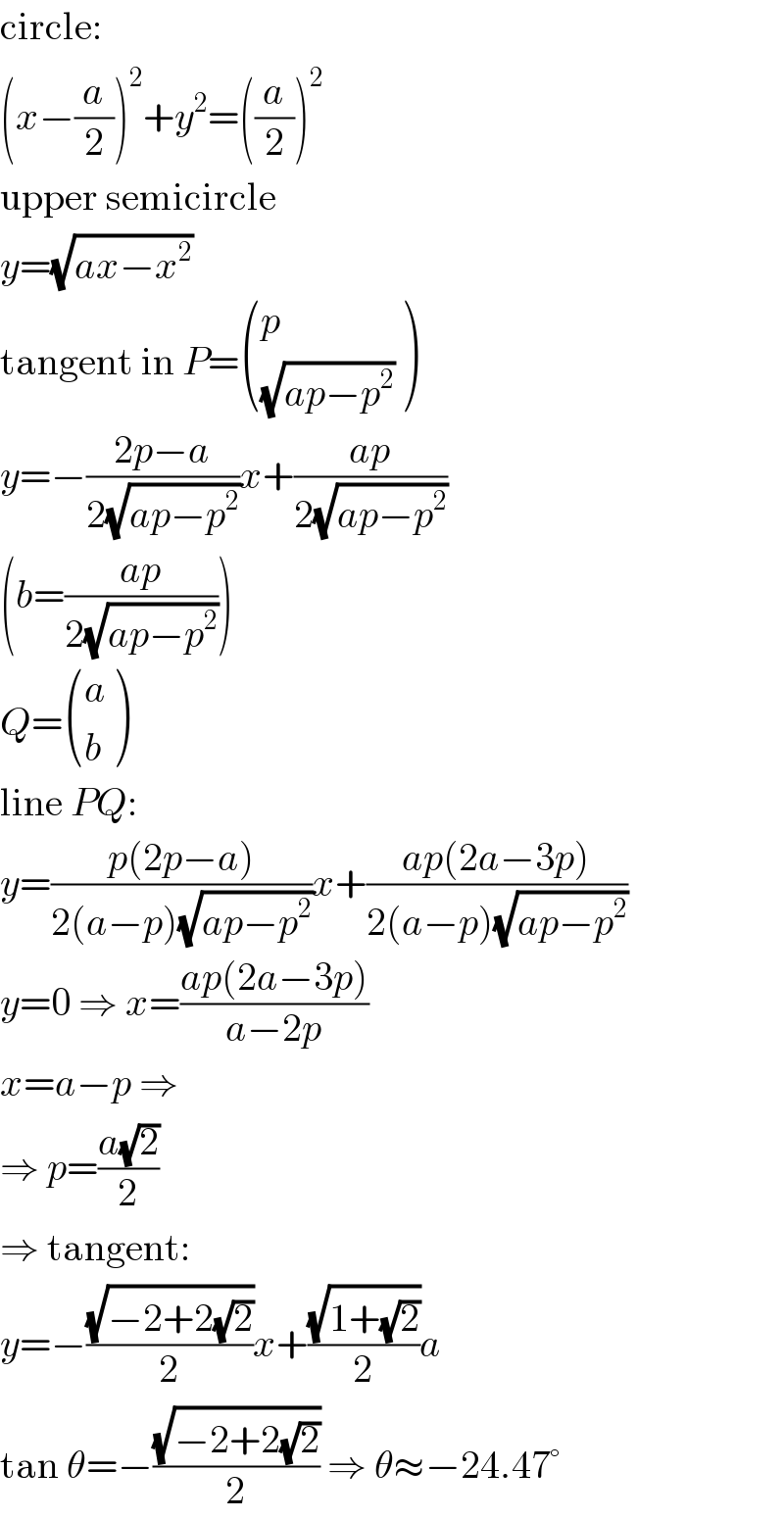
Question and Answers Forum
Question Number 39089 by ajfour last updated on 02/Jul/18

Commented by ajfour last updated on 02/Jul/18

Answered by MJS last updated on 02/Jul/18

Commented by ajfour last updated on 02/Jul/18

Commented by MJS last updated on 02/Jul/18

Commented by ajfour last updated on 02/Jul/18

Commented by MJS last updated on 02/Jul/18

Answered by ajfour last updated on 02/Jul/18

